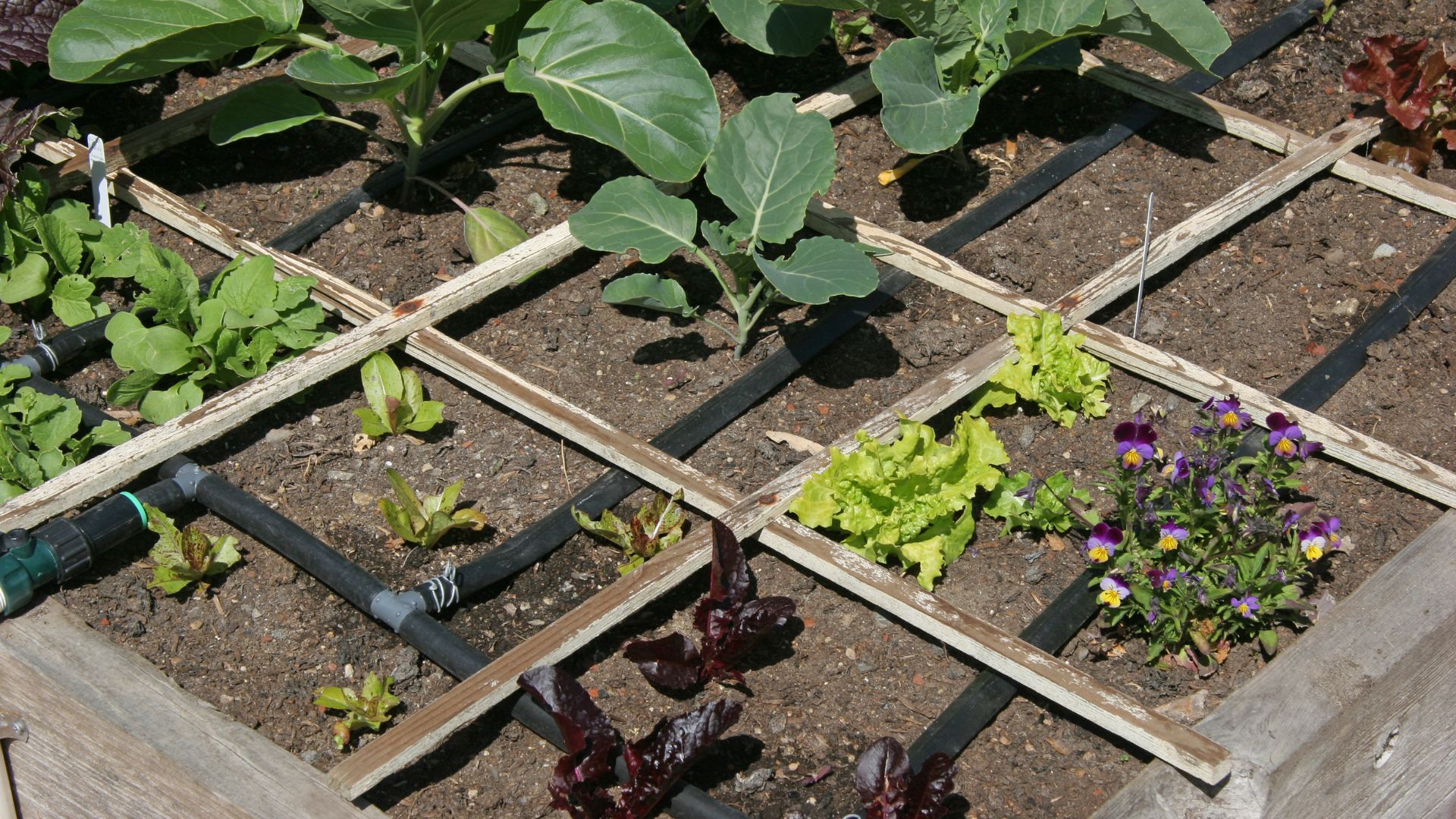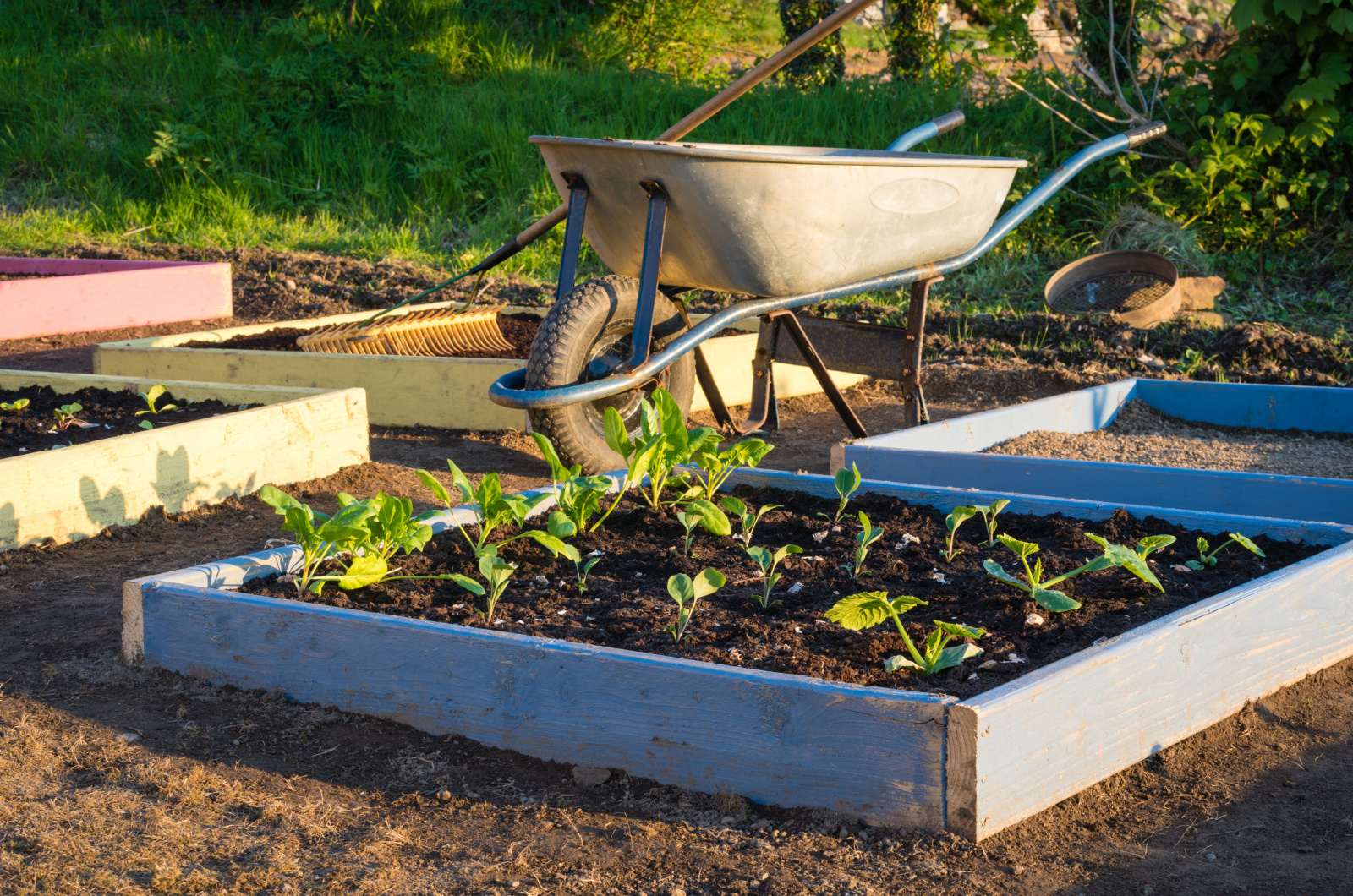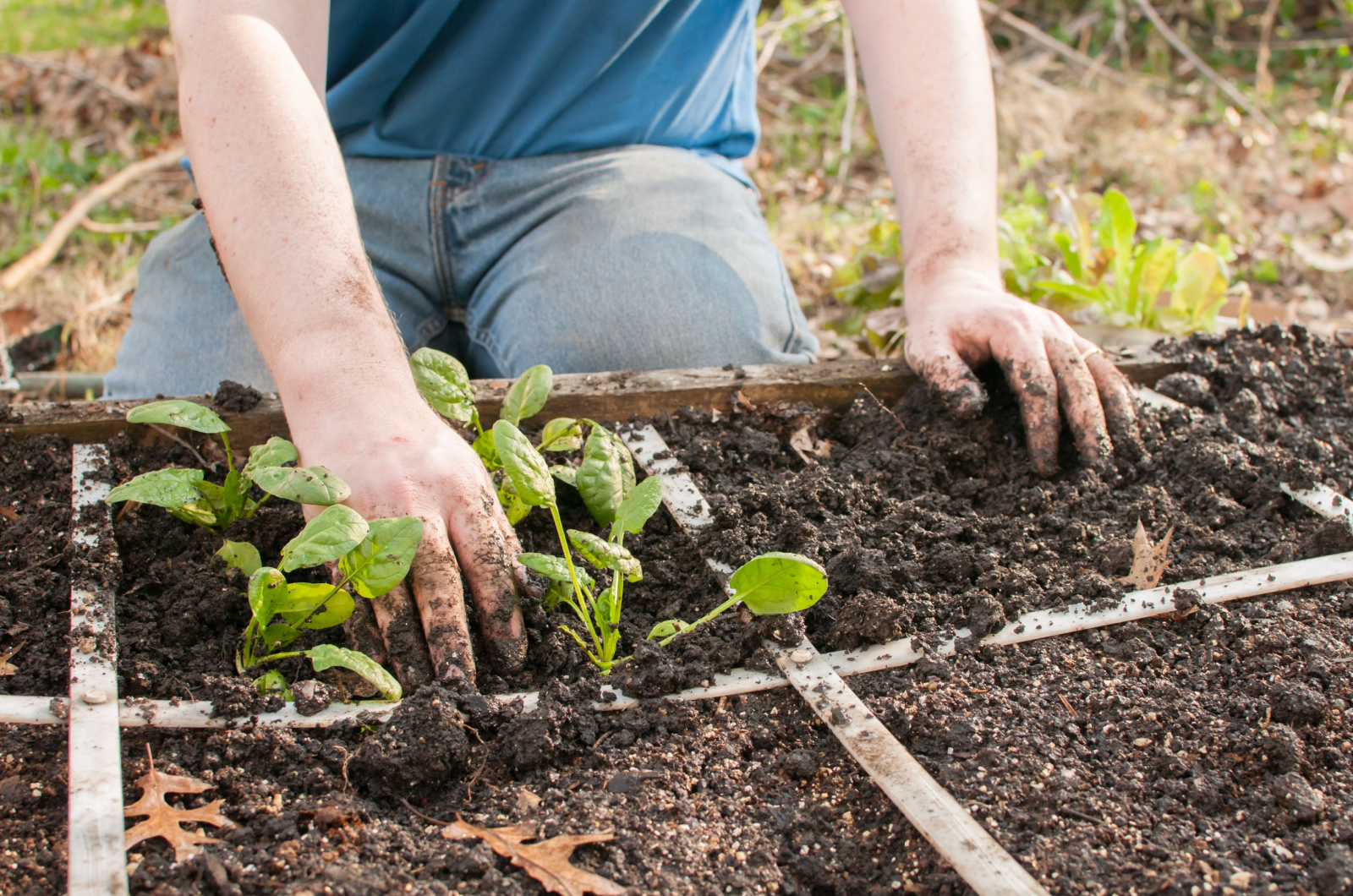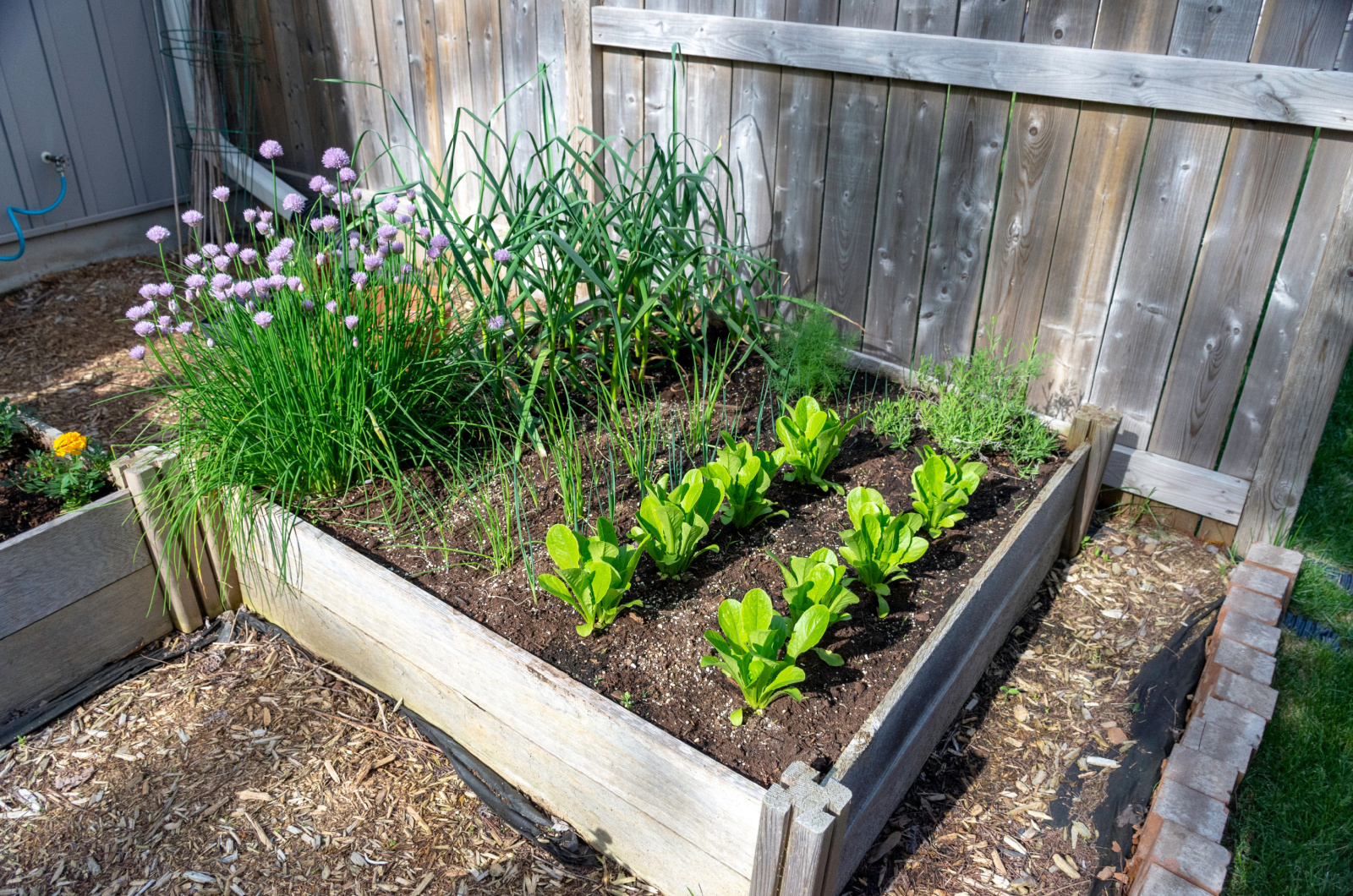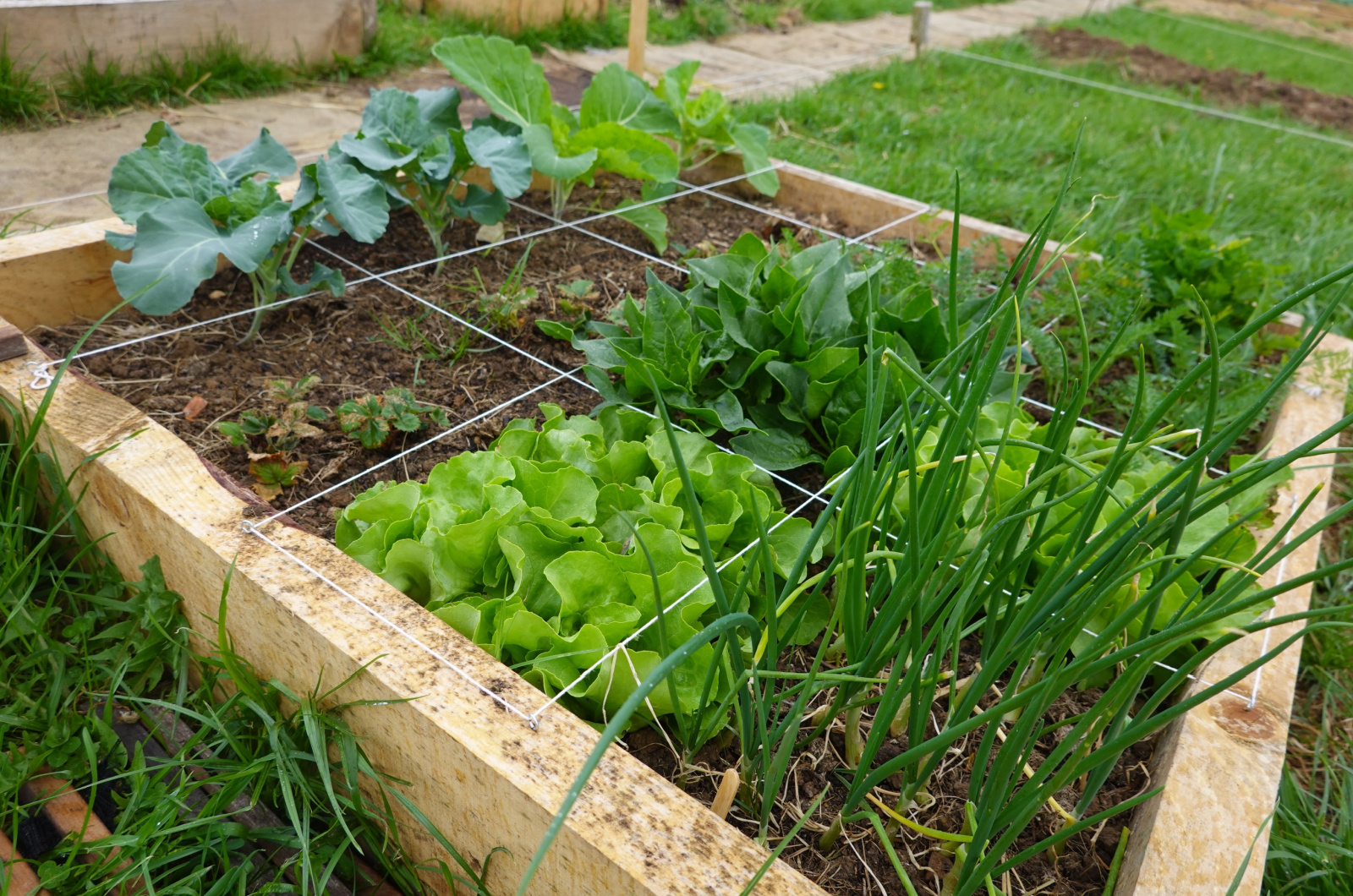Being a beginner gardener and having a small backyard isn’t really a desirable combination. I’m sure you’re dreaming of a bountiful harvest of your own veggies but you have likely heard that it includes a lot of effort.
If all this applies to you, I know exactly what you need: the Square Foot Gardening method!
I often refer to this method as revolutionary because it allows you to start a veggie garden even though you aren’t a skillful grower.
In this article, we’ll unlock the secrets of this remarkable planting method and bring it to life in your own slice of green heaven!
Let’s get started!
What is Square Foot Gardening?
The first thing we need to discuss is the main definition of the term Square Foot Gardening. Well, the good news is that there’s no math included; in a nutshell, the method refers to dividing your raised bed into sections each measuring a square foot.
The two essential things to use in this method are grids and Mel’s Mix i.e., a custom-made growing medium.
The main goal of this planting technique is an efficient use of space while growing diverse plants.
If you want to avoid growing your veggies in containers, then square gardening is all you need.
The Benefits
Well, space-saving is definitely one of the greatest benefits of this method since many gardeners who live in urban areas struggle to grow many veggies in their small spaces.
This planting method allows you to grow veggies anywhere in your garden, even if you have a small patio.
But the story about Square Foot Gardening doesn’t end there. Compared to maintaining standard vegetable plots, this technique saves you money, time, effort, and tools.
You’ll also avoid weeds and exclude rototilling, fertilization, and the use of heavy tools from your gardening chores.
We can thank the soilless potting medium for this, so keep reading to find out more about it.
Once you get the gist of spacing, you can introduce other gardening techniques, such as crop rotation and companion planting.
How To Start Square Foot Gardening
The last and most interesting thing related to Square Foot Gardening is how to start it. We’ll cover the essentials, such as location, making a raised bed, growing medium, grid, and the best plants to include.
1. Select A Suitable Location
Your first consideration when selecting the ideal location for your garden should revolve around ensuring it receives a minimum of six to eight hours of sunlight daily.
No matter which type of plant you choose to grow, the main thing is to give it enough light.
You should also consider making a vertical garden to use the whole space.
There are many climbing plants to choose from and you can attach them to different structures, such as a trellis, fence, or wall. But remember that these plants also need a lot of light for healthy development.
2. Make A Raised Bed
While the principles of this technique can be adapted to a standard garden bed, it’s traditionally practiced in raised beds.
They are freestanding and built above ground level and can be crafted from various materials, such as wood, rocks, concrete, or even galvanized steel.
The experts advise starting with a 4×4 foot bed, which provides 16 squares for planting.
When constructing the raised bed, you have the flexibility to use materials like bricks, wood, stones, or repurposed materials as long as they are non-toxic. It’s essential to avoid materials with paint or chemicals that could potentially leach into your garden.
Another thing to pay attention to is to make a bed that’s at least 6 inches deep so that each plant has enough room to grow.
After you make your raised bed, consider adding a non-toxic bed liner to prevent weed growth.
3. Use Mel’s Mix
Mel’s Mix is the number 1 growing medium when it comes to this planting technique. Mel Bartholomew, the founder of Square Foot Gardening, made the mix, and its efficiency in the growth of shallow-rooted veggies is unquestionable.
This growing medium actually consists of one part peat moss, one part vermiculite, and one part blended compost. These ingredients are found in the best potting soils for vegetables.
Your veggies will have enough nutrients for healthy growth. Since this growing medium contains both free-draining and water-retaining materials, you’ll avoid waterlogging while ensuring enough moisture.
Another great thing about this mix is that it doesn’t include garden soil, which ultimately reduces the risk of weed growth and soil-borne diseases.
4. Add A Grid
The true Square Foot Garden must have grids; otherwise, it’s just a regular raised bed. So after you’ve properly filled your bed with growing medium, the next step is to divide your planting area.
When it comes to dividers, wooden laths make a great material to delineate the bed into one-foot squares. The same goes for bamboo and yardsticks.
You should steer clear of using string for this purpose, as it tends to degrade in unfavorable weather conditions plus it has a relatively short lifespan.
5. Add Plants
Finally, you can start with plant selection; the best thing about this method is that it allows you to grow many different types of vegetables.
You can add lettuce, herbs, or radishes because these veggies don’t require a lot of space to grow.
Veggies you shouldn’t grow in raised beds of any type include zucchini, squash, and potatoes. They need a lot of space to develop healthily and one square foot per plant is definitely not enough.
To avoid any issues, always check how much space a specific plant needs and the ideal time of year to cultivate them.
When considering the average size of a mature lettuce plant, we can grow 4 plants per one-foot square. If you want to include radishes, a single square can hold up to 16 plants.
Once you’ve meticulously planned your garden, you’ll realize why this method stands out as the most efficient way to grow plants because it’s adaptable to various locations, from rural to urban, while utilizing minimal space.
Make sure to check the planting date for each crop; you can still start your fall garden!
Also include various gardening techniques, such as crop rotation and companion planting, to enhance plant development, decrease susceptibility to pests and diseases, and prevent soil depletion.
Square Foot Gardening is a perfect opportunity for beginner growers to start growing their own veggies. Simply follow the steps above and you’ll have a thriving garden full of delicious crops in no time!

